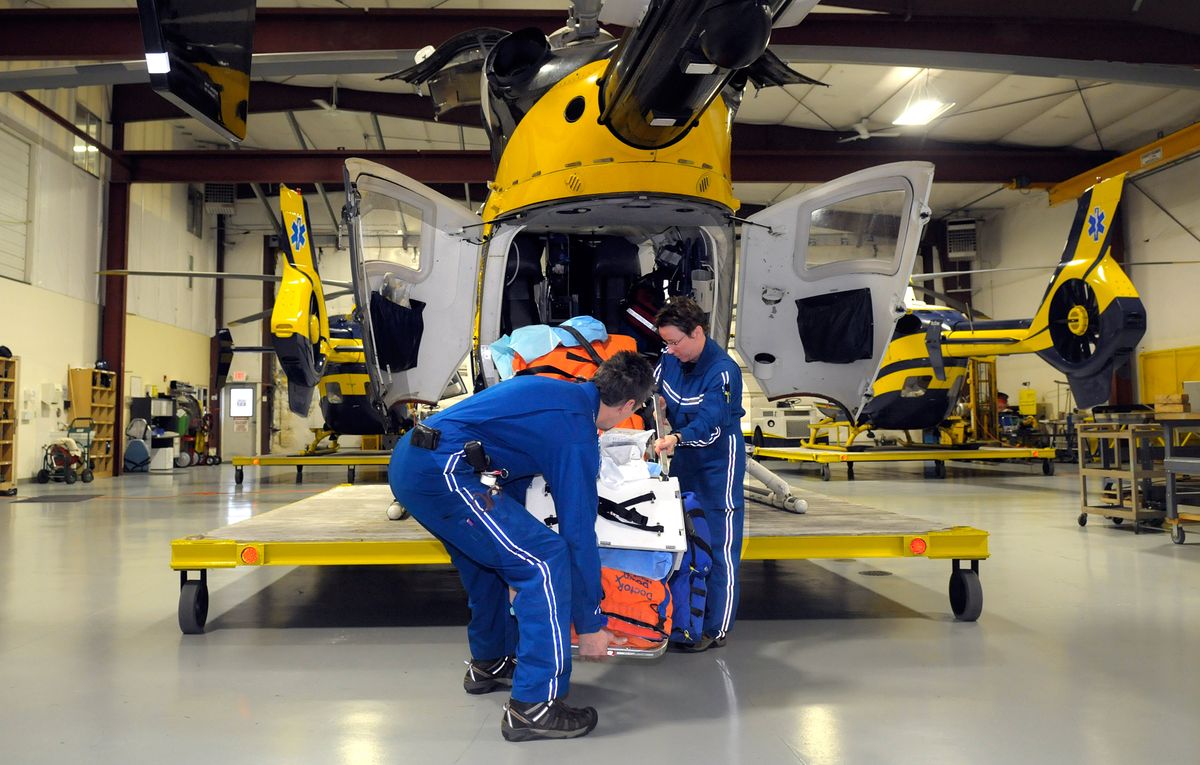Medical aircraft scrutinized
MedStar confident after hearings on spate of accidents across nation

A sharp climb in fatal medical helicopter crashes has highlighted what is described as a fast-growing, lightly regulated business.
The problems prompted National Transportation Safety Board hearings earlier this month in the wake of the nine fatal crashes that killed 35 people in the past 11 months across the United States.
But Northwest MedStar, the air ambulance service operating across the Inland Northwest, is confident its safety protocols exceed those discussed at the hearings.
“We listened and said, ‘Oh, good, we haven’t missed anything. There are no surprises here,’ ” said MedStar director Eveline Bisson.
Changes that would tighten regulations or standardize safety measures would be welcomed by Northwest MedStar, which is run by Inland Northwest Health Services, a nonprofit organization governed by Providence Sacred Heart Medical Center and Deaconess Medical Center. MedStar transported about 3,500 patients last year.
Bisson said the $20 million operation has 112 employees who use four helicopters and three airplanes out of Spokane and the Tri-Cities.
MedStar doesn’t operate in a highly competitive market, because its destination hospitals are co-owners of the service.
And that has helped MedStar make appropriate investments in training and safety without having to suppress costs to win air ambulance contracts with the lowest bids, Bisson said.
There are about 800 medical helicopters airlifting ill and injured patients in the United States. It’s a fleet that has doubled in number during the past decade as it responds to emergencies and accidents, often in remote areas.
The industry has offered recommendations to the NTSB, including the use of night-vision goggles, federal funding for more hospital helipads, enhanced weather reporting and GPS technologies to help pilots better navigate during severe weather.
“What we do know is that recent studies reveal that the majority of accidents occur in low light and changing weather,” said Sandy Kinkade, president of the Air Medical Service Industry based in Alexandria, Va. “It is imperative that our industry continue to adopt appropriate safety measures, particularly with regard to nighttime and changing weather situations.”
The industry also has asked for studies regarding flight crew fatigue, and guidelines that would discourage hospitals from shopping for the cheapest air ambulance services in competitive markets.
Critics say the Federal Aviation Administration needs to impose stricter safety standards on medical helicopters rather than allow the industry to largely regulate itself.
It was 20 years ago that a medical helicopter operated by what was then Sacred Heart Medical Center’s Heartflite crashed near Spirit Lake, Idaho. The flight crew, including a trauma nurse, respiratory therapist and the pilot, along with the patient, were killed.
The crash was blamed on a mechanical failure, said Jean Kelleher, the program director of Heartflite at the time of the accident. She is now the nurse manager of Sacred Heart’s neonatal intensive care unit.
That program, along with the competing LifeBird air ambulance run by Deaconess Medical Center, were later discontinued as the hospitals collaborated to form Northwest MedStar.